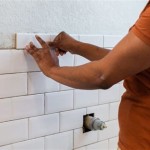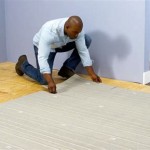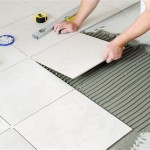Disadvantages of Vinyl Tiles
Vinyl tiles, a popular flooring option, present a seemingly attractive mix of affordability, durability, and aesthetic versatility. They are commonly found in residential and commercial spaces due to their water resistance and relative ease of installation. However, despite these advantages, vinyl tiles also possess several significant drawbacks that prospective buyers should carefully consider before making a purchase decision. These disadvantages range from environmental concerns and health implications to practical issues related to maintenance and long-term performance.
Environmental and Health Concerns
One of the most significant disadvantages of vinyl tiles revolves around their environmental impact and potential health risks. The primary component of most vinyl tiles is polyvinyl chloride (PVC), a synthetic plastic polymer derived from petroleum. The production of PVC is energy-intensive and releases harmful pollutants into the environment. These pollutants include dioxins, known carcinogens, and volatile organic compounds (VOCs). The extraction, transportation, and refining of petroleum contribute to greenhouse gas emissions and resource depletion, further exacerbating environmental concerns.
Furthermore, the manufacturing process often involves the use of plasticizers, such as phthalates, to make the PVC flexible and pliable. Phthalates have been linked to various health problems, including endocrine disruption, reproductive issues, and developmental problems in children. While some manufacturers have started using alternative plasticizers, the prevalence of phthalates in older vinyl tiles remains a concern.
The disposal of vinyl tiles at the end of their lifespan also presents environmental challenges. PVC is not biodegradable and can persist in landfills for hundreds of years. Incineration of vinyl tiles releases dioxins and other toxic chemicals into the atmosphere. While recycling programs for vinyl are emerging, they are not yet widespread, and the vast majority of discarded vinyl tiles end up in landfills, contributing to environmental pollution.
VOC emissions from vinyl tiles can also negatively impact indoor air quality. VOCs are organic chemicals that evaporate at room temperature and can cause a range of health problems, including headaches, dizziness, respiratory irritation, and allergic reactions. While VOC emissions typically decrease over time, they can be a significant concern, especially in newly installed floors and poorly ventilated spaces. Choosing low-VOC or VOC-free vinyl tiles can mitigate this risk, but these options may be more expensive.
Durability and Maintenance Limitations
While vinyl tiles are often touted for their durability, they are not immune to wear and tear. Compared to other flooring materials like hardwood or stone, vinyl tiles are relatively susceptible to scratches, dents, and tears. Sharp objects, heavy furniture, and abrasive cleaning products can damage the surface of vinyl tiles, leading to unsightly blemishes and eventually requiring replacement.
The longevity of vinyl tiles depends on several factors, including the quality of the material, the thickness of the wear layer, and the level of foot traffic. Thinner vinyl tiles with a thin wear layer are more prone to damage and may only last for a few years in high-traffic areas. While thicker, more durable vinyl tiles are available, they come at a higher cost.
Maintaining vinyl tiles requires regular cleaning to remove dirt, dust, and spills. While vinyl is water-resistant, prolonged exposure to moisture can still damage the adhesive and lead to warping or lifting. Harsh chemicals and abrasive cleaners should be avoided, as they can dull the finish and damage the surface. Regular sweeping or vacuuming, followed by damp mopping with a mild detergent, is typically recommended for routine maintenance.
Repairing damaged vinyl tiles can be challenging. While individual tiles can be replaced, matching the color and pattern of older tiles can be difficult, especially if the flooring has faded or discolored over time. In some cases, replacing the entire floor may be necessary, which can be a costly and time-consuming undertaking.
Aesthetic and Design Constraints
While vinyl tiles offer a wide range of colors, patterns, and styles, they may not always replicate the look and feel of natural materials like wood or stone convincingly. The printed layer that provides the visual design of vinyl tiles can sometimes appear artificial, especially in close-up views. While advancements in printing technology have improved the realism of vinyl tiles, they still may not match the aesthetic appeal of genuine natural materials.
The installation of vinyl tiles can also present aesthetic challenges. Proper subfloor preparation is crucial to ensure a smooth, even surface. Imperfections in the subfloor can telegraph through the vinyl tiles, resulting in an uneven or bumpy appearance. Professional installation is often recommended to achieve the best results, which can add to the overall cost of the project.
Furthermore, the resale value of a home with vinyl flooring may be lower compared to homes with more premium flooring materials like hardwood or tile. While vinyl tiles are a practical and affordable option, they may not appeal to all buyers, especially those seeking high-end finishes.
Vinyl tiles can be susceptible to fading or discoloration over time, especially when exposed to direct sunlight. UV radiation can break down the pigments in the printed layer, causing the colors to fade or yellow. Using window treatments or UV-blocking films can help mitigate this risk, but it is important to be aware of the potential for fading when choosing vinyl tiles for areas with high sun exposure.
The texture of vinyl tiles can also be a disadvantage in certain applications. Smooth vinyl tiles can be slippery when wet, posing a safety hazard in bathrooms or kitchens. Textured vinyl tiles offer better slip resistance but can be more difficult to clean, as dirt and debris can become trapped in the grooves. Choosing the right type of vinyl tile for the specific application is essential to ensure both safety and ease of maintenance.
Finally, while vinyl tiles are available in a variety of sizes and shapes, they may not offer the same level of design flexibility as other flooring options like ceramic tiles or hardwood planks. Custom designs and intricate patterns may be more difficult to achieve with vinyl tiles, limiting the creative possibilities for some homeowners.
In conclusion, while vinyl tiles offer certain benefits such as affordability and water resistance, they also present several disadvantages related to environmental impact, health concerns, durability, maintenance, and aesthetics. Careful consideration of these drawbacks is essential before making a decision to install vinyl tiles in any space.

10 Disadvantages Of Lvt Flooring From A Expert Wood And Beyond Blog

Pros Cons Of Vinyl Flooring Eric Wright Carpets

The Risks And Disadvantages Of Vinyl Flooring City Floor Supply Blog

Disadvantages Of Vinyl Flooring Lx Hausys

Advantages And Disadvantages Of Vinyl Flooring

Vinyl Flooring Pros And Cons Forbes Home

Vinyl Flooring And Floor Tiles The 8 Pros Cons

The Disadvantages Of Vinyl Plank Flooring A Guide Reallyfloors America S Est Hardwood

Vinyl Flooring And Floor Tiles The 8 Pros Cons

8 Disadvantages Of Vinyl Flooring From A Professional Wood And Beyond Blog
Related Posts








